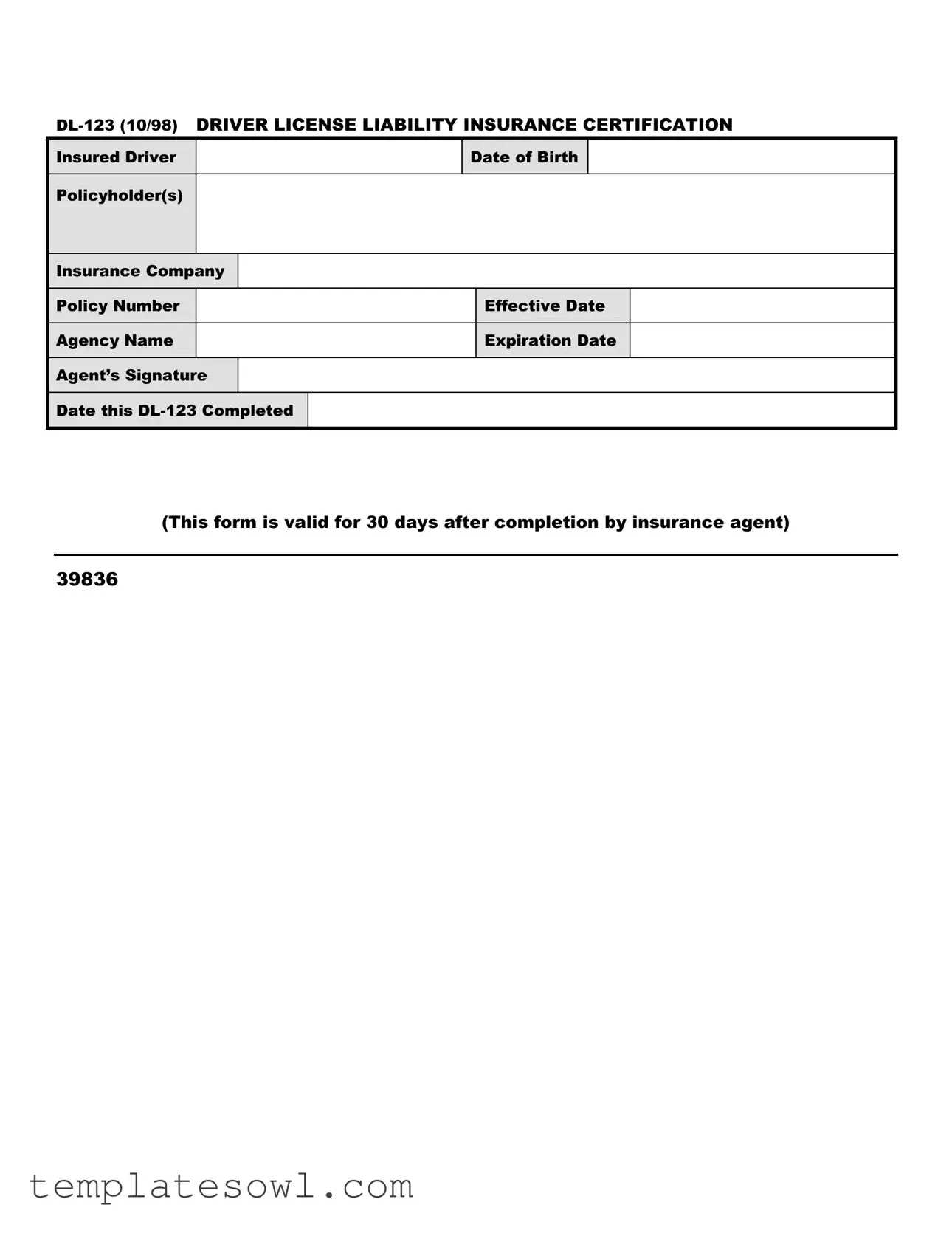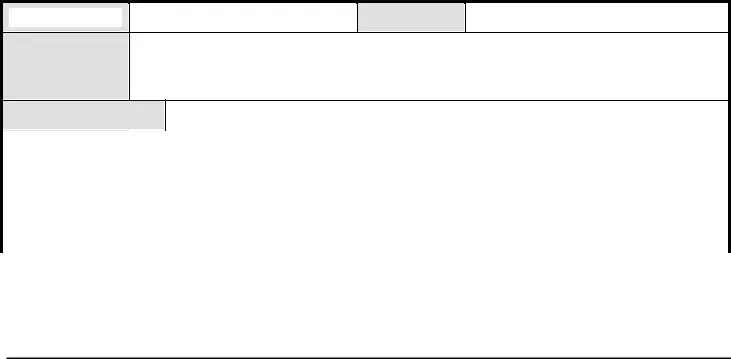Filling out the DL-123 form may seem straightforward, but there are several common mistakes that can lead to delays or even rejections. One of the biggest errors individuals make is not providing accurate policyholder information. The policyholder's name must match the details on the insurance policy exactly. Any discrepancies, such as misspellings or incorrect initials, can cause issues with processing the form.
Another frequent mistake is failing to include the correct policy number. This number is crucial for the insurance company and must be entered without any errors. Omitting it or providing an outdated number can result in the form being deemed invalid.
There are also issues related to the effective date and expiration date of the insurance policy. It’s essential to ensure that these dates are current and reflect the policy's validity during the time the DL-123 is completed. If the effective date has not yet arrived or if the policy has lapsed, the form will not serve its intended purpose.
Moreover, some individuals neglect to have the insurance agent's signature on the form. The agent must sign and date the DL-123 to confirm that the information provided is accurate and complies with the necessary insurance requirements. Without this signature, the document cannot be processed.
Timing is another critical factor. The DL-123 form is valid for only 30 days after being completed by the insurance agent. Some people forget to submit the form promptly, leading to a situation where it is no longer valid by the time it reaches the Department of Motor Vehicles (DMV).
Another common oversight is not indicating the insurance company's name clearly. This information must be printed legibly to prevent any confusion or miscommunication regarding which agency is handling the insurance.
Checking the insured driver's details is also vital. Mistakes in entering the insured driver's date of birth can lead to complications. This information must match the records on file with the DMV, as any mismatch could raise red flags.
Additionally, some people forget to include their contact information on the form. Providing a phone number or email helps ensure the DMV can easily contact you if there are inquiries regarding your submission.
Lastly, individuals often skip reviewing the completed form for accuracy. It’s crucial to take a moment to double-check all entries before submission. A careful review can catch errors that might otherwise delay the process.
In summary, attention to detail is key when filling out the DL-123 form. By avoiding these common pitfalls, you can ensure a smoother submission process and minimize potential delays with your driver's license certification.

